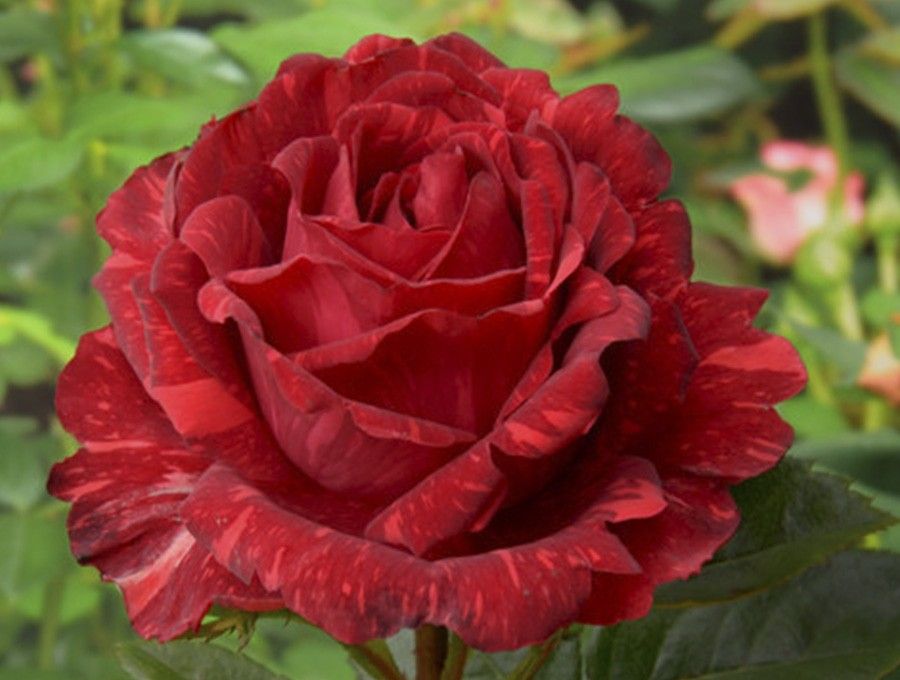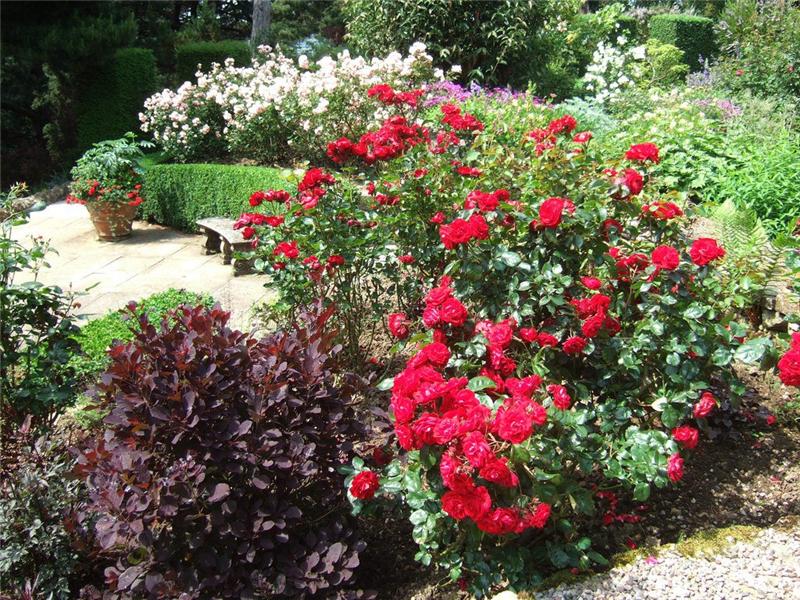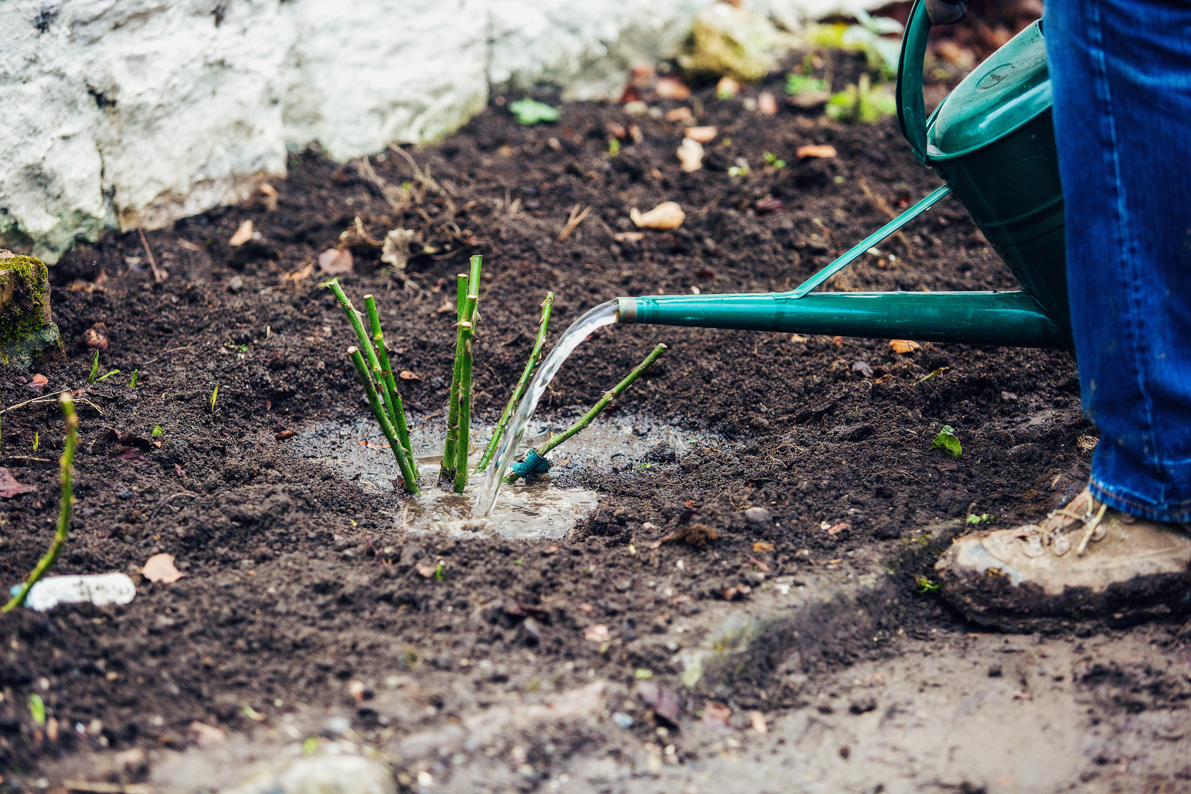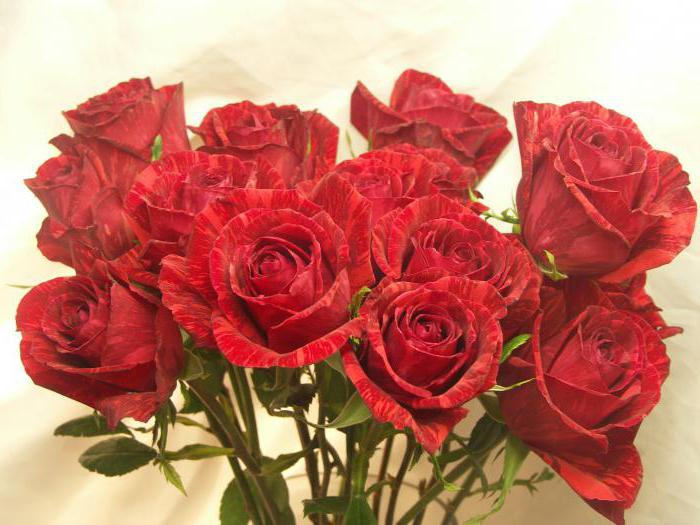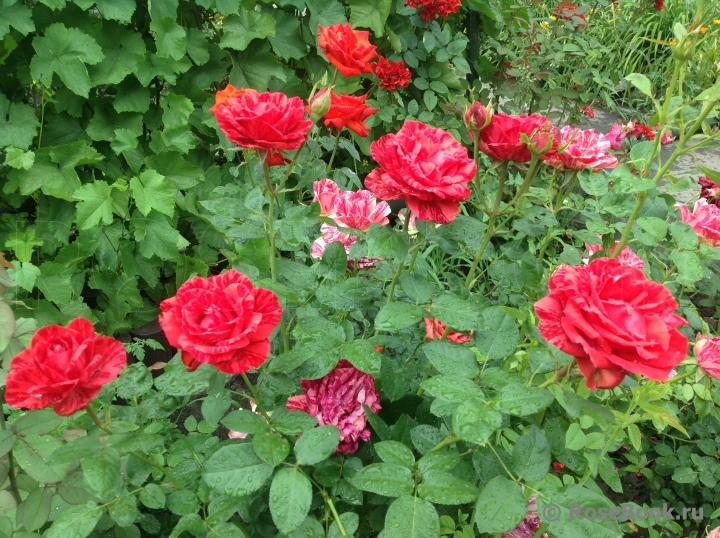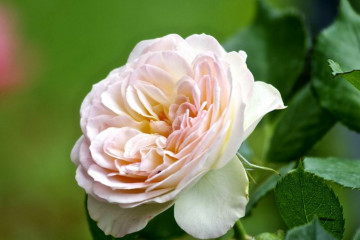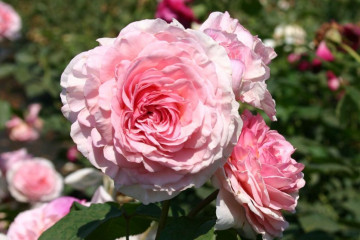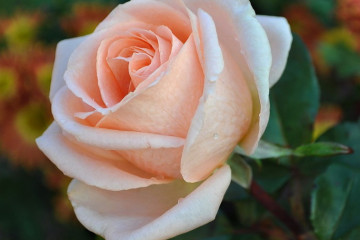Rosa Red Intuition (Red Intuition) - description of the garden variety
Content:
Rose Red Intuition is one of the favorite flowers of florists, designers, and amateur gardeners. The variety is popular for its unusual striped color. Further information on growing plants in personal plots.
Rose Red Intuition - what kind, history of creation
The variety was bred by French specialists in 1999. The hybrid tea rose quickly spread throughout Europe. The plant adapts well to various climatic conditions.
Brief description, characteristic
Rosa Intuition is a bush 1.2 meters high and 70 centimeters wide. The foliage is glossy, the thorns are practically absent. The bud consists of 30-35 petals, colored in a raspberry-pomegranate color. The peculiarity of the variety is that there are stripes on the flowers, for which the culture is sometimes called the tiger rose.
Advantages and disadvantages of the variety
The advantages of the Red Intuition rose include the following qualities:
- long flowering;
- high decorative appearance;
- compactness of the bush;
- good immunity;
- medium resistance to frost.
The disadvantages include the appearance of fungal diseases with excessive watering.
Use in landscape design
The rose looks so impressive that it can be planted alone against the background of a lawn or undersized decorative deciduous plants. The variety will be in harmony with the Red International rose similar to it. It will look beautiful next to medium-tall thujas, junipers, cypress trees.
Growing a flower
In the south, the flower can be planted in the fall, in the north - in the spring. During the season, the bushes will take root well, they will not be damaged by winter frosts.
In what form is the landing
Saplings are planted on the site at the age of 1-2 years. The younger the plants, the easier they will take root. Rose bushes grown independently or purchased in the garden center are planted. Gardeners practically do not use seed planting because of their laboriousness.
What time
A rose is planted in the spring, after the ground has thawed, or in the fall, 3-4 weeks before the onset of frost. The advantage of spring planting is that the bushes have time to take root before frost. Autumn planting is good because the plants have buds, and the gardener can make sure that he is getting exactly the Intuition hybrid.
Location selection
The territory for planting a rose garden is selected well-lit by the sun, protected from northern winds. It is advisable that at noon a light shadow falls on the rose, otherwise the buds may fade from the scorching sun's rays. Groundwater should not go higher than 1 meter to the ground surface.
How to prepare the soil and flower for planting
The site is freed from debris, dug up.A hole is dug and filled with fertile soil 2 weeks before planting the bushes. The root system is soaked for 12 hours in water with the addition of any growth stimulant.
Planting procedure step by step
Rose Red Intuition is planted on the site as follows:
- dig a hole 60 × 60 centimeters in size;
- fill with fertile soil;
- put a seedling in the middle, straighten the roots;
- fall asleep with earth 5 centimeters above the root collar.
The root circle is tamped, watered with settled water.
Plant care
For abundant flowering, bushes require care: watering, loosening the soil, removing weeds, feeding. To maintain a decorative appearance, flower shoots are cut off when wilting begins. If frosts below -30 ° C are expected, the plantings are covered for the winter.
Watering rules and humidity
Rose Intuition requires abundant watering. Once a week, the bushes are spilled with 10-15 liters of water. The topsoil should dry out between irrigations. With timely precipitation, additional watering is not performed.
Top dressing and soil quality
The plantation prefers to grow in loose, fertile soil. For abundant flowering, the rose is fertilized several times per season. Nitrogen is introduced in the spring, and complex mineral feeding in the summer. After flowering, the bushes require potassium, which will help the plants to winter safely.
Pruning and replanting
Throughout the season, sanitary pruning is carried out, removing diseased, broken, dried shoots. In the spring, before bud break, the stems are cut to form a bush. Pruning shoots after flowering promotes the formation of more and more flower branches. If a bush transplant is required, it is done in spring or autumn. 1-2-year-old seedlings will tolerate the procedure painlessly.
Features of wintering a flower
The variety is frost-resistant, so in the south it is grown without shelter. It is enough to make abundant soil moistening before wintering, then, with the onset of frost, to spud the bushes. In the north, in addition to water-charging irrigation and hilling roses, you can build a frame shelter.
Blooming rose
In the half-release stage, the shape of the buds is goblet. When the flower is fully opened, its diameter reaches 10-12 centimeters. A pleasant fruity aroma emanates from the buds. The inflorescences are similar to Pink Intuition flowers, which have the same longitudinal stripes, but are slightly lighter in color.
A period of activity and rest
Red Intuition rose has a long flowering time. The first wave starts in April. After a short rest, the buds begin to bloom again. Flowering continues until the first frost.
Care during and after flowering
For abundant and long-lasting flowering, roses require feeding in the form of phosphorus, potassium, magnesium. When the inflorescences begin to dry out, they are cut off, since the seeds that begin to form take away a lot of energy from the plantings.
In addition, when pruning, dormant buds begin to wake up, from which new shoots are formed. After flowering, potassium and phosphorus are introduced into the root circle, which helps the rose to recover and cope with winter frosts.
What to do if it does not bloom, possible reasons
The rose may not bloom for the following reasons:
- Excess nitrogen in the soil. This element is needed only in the spring to build greenery.
- Incorrect cropping. If the shoots are cut too short, flowering is likely only towards the end of summer.
- Excess or lack of watering. Without moisture, it is difficult for a rose to grow buds. With excessive watering, the plant may not only fail to bloom, but also die.
- The presence of root growth.If you do not remove unnecessary shoots growing from the roots, the plant will weaken, it does not have enough strength to bloom.
- The bush is over 3 years old. Old shoots become woody, flower buds cease to form on them. To rejuvenate the plants, thick stems are removed, new ones will begin to grow in their place.
Having corrected the reasons why the rose stopped flowering, the gardener will again enjoy the beautiful view of decorative flowering plantings.
Flower propagation
A rose on the site can be propagated in several ways. Most often, green cuttings are used. In addition, reproduction is common with the help of layering, grafting, dividing the bush.
When is it produced
Red Intuishen roses can be propagated during spring, summer, autumn. Cuttings are used after flowering, rooting in water or immediately in the ground. They can be stored until spring by cutting them off in the fall and placing them in a cool place for the winter.
Detailed description
The rose is propagated as follows:
- cut the cuttings with a diameter of about 1 centimeter and a length of 10-15 centimeters;
- in the lower part of the shoot, the foliage is completely removed, in the upper part, cut in half;
- the lower part of the cuttings is dusted in a growth enhancer, planted in a loose substrate;
- covered with plastic wrap.
Diseases, pests and ways to control them
Rose Intuition can be affected by powdery mildew, chlorosis, root rot. In order to prevent the appearance of diseases, preventive spraying with fungicides is carried out, foliage is removed from the root circle, and excessive moisture of the roots is not allowed. Of the pests, the bushes can be chosen by aphids, which are disposed of with the help of insecticides.
Red Intuition hybrid tea rose is one of the most beautiful plants in the pink family. With proper care, it will delight for a long time with its flowering, planted both in city parks, squares, and in gardeners' backyards.
